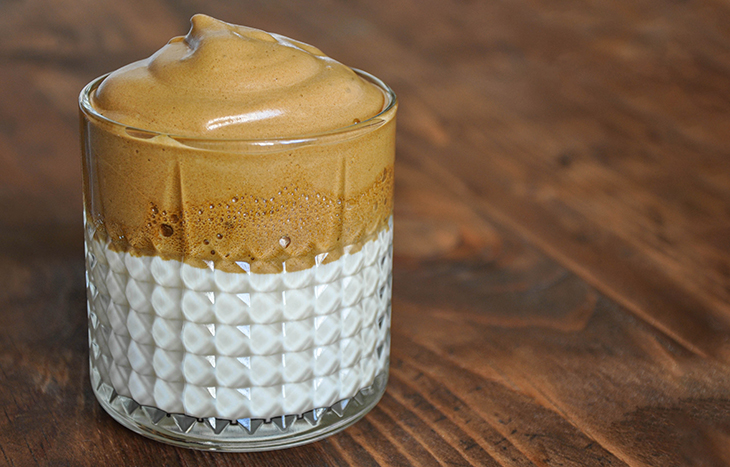Is Dalgona coffee just a quarantine craze?

With stay-at-home directives still in place in many cities around the world, new trends are starting to emerge as stir-crazy people are finding inventive ways to pass the time and amuse themselves (and not “read more” or “learn a new language” or “organise…” as many claimed they would do if they “only had more time”). Many people, for example, are being creative and adventurous such as learning how to sew or how to cook or bake (in the US, banana bread and beer bread seem to be two popular items to bake — maybe because of the relative ease and that neither require yeast…).
Another new trend is making Dalgona coffee or whipped coffee. Actually, the trend is not only making the coffee concoction at home, which calls for only four ingredients, but then posting “your creation” via video or picture on Instagram or TikTok because of its aesthetically pleasing appearance. Hence, its “’Gram-worthy look” and easy recipe led the coffee beverage to go viral. I had never heard of Dalgona coffee until it started popping up on several of my news feeds (even People Magazine and the TodayShow.com have reported on it and explained how to make it).
According to Elite Daily, TikTok creator @iamhannahcho appeared to kick off the trend in March by sharing a recipe for whipped coffee.
Apparently, the coffee originated in South Korea and is called Dalgona coffee because of its similarity to a popular candy there, toffee dalgona (I have no idea if “Dalgona” should be capitalized or lowercase because I’ve seen it both ways). As previously mentioned, the coffee requires only four ingredients: instant coffee, sugar, water and milk (any kind will suffice: whole, skim, oat, almond, etc.). First combine equal parts of instant coffee, sugar and boiling water, then whip with a hand blender or whisk until frothy — the consistency of whipped cream or meringue. Then simply spoon atop a glass or mug of milk — hot or cold. You may drink as is or blend it.
Given the craze, the simplicity and since I had all the ingredients (I’m not an instant coffee drinker but I keep a couple of sticks/pouches on hand for baking purposes), I decided to try it. For a single serving, I mixed two tablespoons of instant coffee with less than two tablespoons of sugar (I do not typically use any sweetener in my coffee) and two tablespoons of boiling water and then whisked the mixture by hand for about three or four minutes until soft (yet slightly stiff) peaks formed. I placed the whipped topping atop cold skim milk and then blended gently with a reusable straw.
I recommend blending the topping into the milk, otherwise it will be just a glass of milk followed by the topping, which I found to be not as desirable on its own. As someone who does not drink instant coffee, I was taken aback by how strong and bitter the coffee was, even blended – and the instant coffee taste lingered for quite a long time. In retrospect, I should have used more sugar to cut the bitterness. Additionally, a higher quality instant coffee would likely improve the taste.
While it’s not “my cuppa joe,” I understand the appeal of Dalgona coffee. It’s easy, fun to make and visually appealing. And after stay-at-home directives are lifted and people are entertaining again, homemade Dalgona coffee would be something unique to offer guests (who are not coffee aficionados).
Since first learning about Dalgona coffee, I have come across other articles (but not with the popularity or visual appeal of Dalgona coffee), with suggestions of other drinks to make with instant coffee once “you’ve mastered Dalgona coffee.” Will these new at-home coffee trends boost sales of instant coffee?
Coffee has not been one of the hard-to-find items during the Covid-19 pandemic. And here in the US, instant coffee is not a popular format. However, according to its new report, The Impact of Coronavirus on Hot Drinks, Euromonitor International reveals that the availability of instant coffee might be affected during this period (globally). “Fresh coffee is generally not seeing high rates of panic buying given its natural expiration. Instant coffee, as it is more shelf stable, has been more affected and will probably see bigger declines in sales later, given how well stocked many consumers are now,” noted Matthew Barry, senior beverages analyst, in the report.
However, depending on how long people are quarantined and the visual and potential viral appeal of coffee drinks, it will be interesting to see what may happen in the instant coffee sector.



